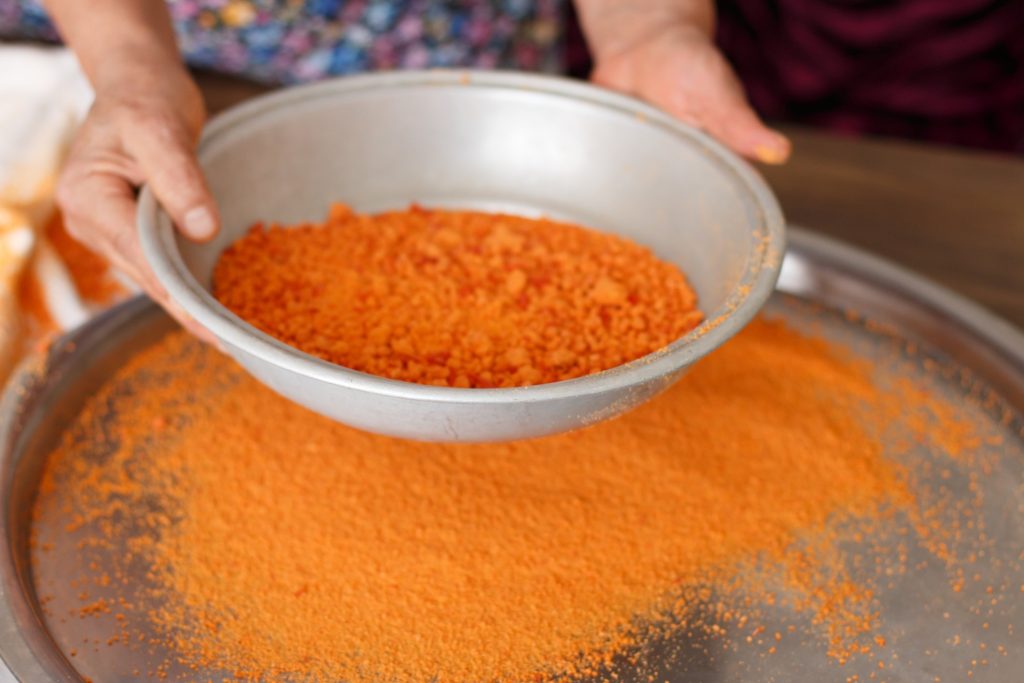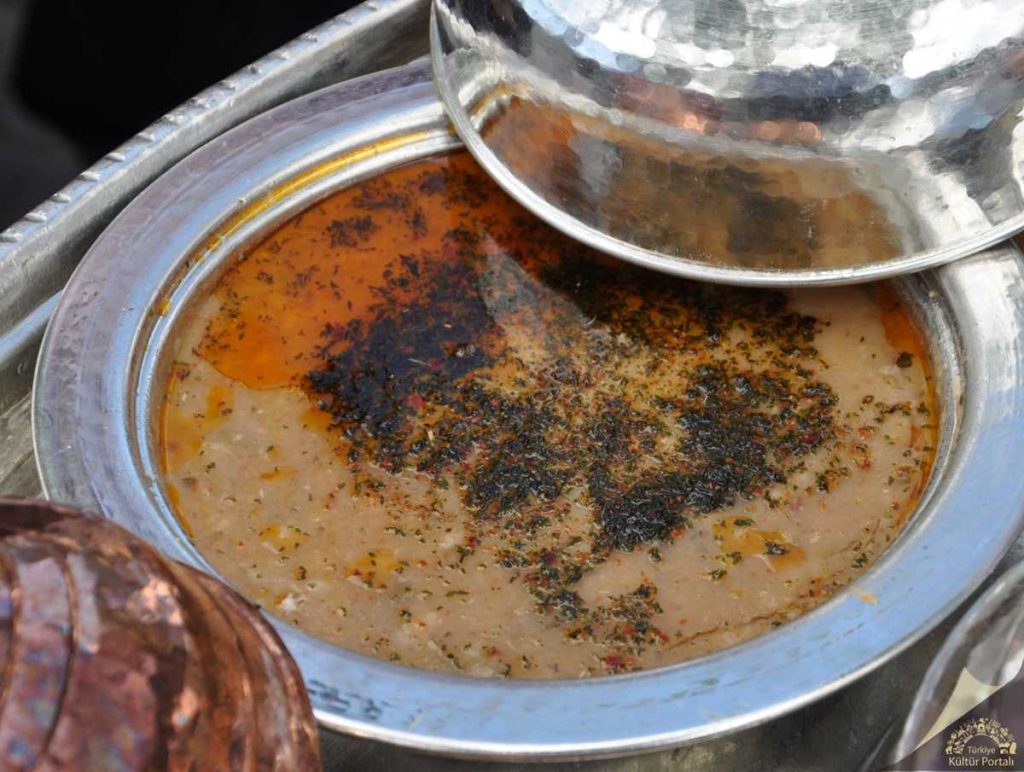When you visit Anatolia; especially rural villages; you’re bound to be offered a warm bowl of tarhana soup. Known for its nutritional value, long shelf life, and deep cultural roots, tarhana has been a cornerstone of Anatolian cuisine for centuries. Today, it’s also embraced as part of the organic and natural food movement.
In this article, we explore tarhana’s origin story, its historical journey, and regional recipes that showcase the dish’s rich diversity across Turkey.
The History and Origin of Tarhana Soup
Tarhana’s roots trace back to Central Asia, long before the rise of the Ottoman Empire. In these lands, harsh winters made food preservation a necessity. Much like how dried meat and yogurt were used for survival, tarhana emerged by combining dried yogurt, flour, vegetables, and spices, creating a nutrient-dense, easily storable base for soup.

It takes time to make Tarhana
A Legend from the Ottoman Era
According to Ottoman folklore, Yavuz Sultan Selim, disguised as a commoner, visited homes during Ramadan to join iftar meals. In one humble household, he was served a soup made from fermented grains and yogurt. When he asked the name of the dish, the hostess modestly replied with a term that meant “poor food.” From that moment, the dish became known as “tarhana.”
What Is Tarhana Soup?
Tarhana is a fermented soup base typically prepared in the summer and consumed during the winter. Its key ingredients; flour, yogurt, vegetables, and yeast; are fermented, dried, and ground into powder or rolled into balls. When cooked, it becomes a thick, hearty soup often flavored with herbs, garlic, and sometimes meat or legumes.
Regional Varieties of Tarhana in Turkey
Each region of Turkey offers a unique twist on tarhana. Below are some of the most beloved types:
- Maraş Tarhana (Classic)
- Ingredients: Yogurt, flour, yeast, vegetables, spices.
- Preparation: Fermented, dried, and ground.
- Cooking Tip: Soaked overnight, cooked with a wooden spoon (never metal). Garlic, red pepper flakes, and dried mint are added for flavor. Often served with pickled turnip juice.
- Bolu Cranberry Tarhana (Kızılcık Tarhana)
- Made using local cranberries (kızılcık), giving it a reddish color.
- Uses hard red wheat flour and is dried on cloth surfaces.
- Typically prepared in the summer and stored for winter.
- Düzce Tarhana
- Similar to Bolu’s version, also made with dried cranberries.
- Cooked with sautéed onion, tomato paste, and red pepper paste, then simmered with water.
- Optional: Add minced meat and top with fresh parsley for a heartier version.
- Denizli Vegetable Ball Tarhana (Sebzeli Top Tarhana)
- Formed into ball-shaped lumps after mixing flour, yogurt, vegetables, and spices.
- Before cooking, soaked and combined with cowpeas and pumpkin.
- Finished with butter and black pepper for a rich, seasonal flavor.
- Kütahya Cranberry Soup (Kızılcık Çorbası)
- Simple and quick: Ready in 10 minutes.
- Cooked with sautéed onions and garlic, flavored with dried cranberries.
- A great introduction to fruity versions of tarhana soup.
- Uşak Tarhana Soup
- Fermented over 3 weeks in a large pot with flour, yogurt, milk, peppers, tomatoes, chickpeas, beans, and herbs.
- The mixture is mixed every two days and then dried and stored in clay jars.
- Cooked with meat broth and butter for a savory finish.
- Kütahya Sticky Bulgur Tarhana Soup (Sıkıcık Çorbası)
- Uses fine bulgur instead of flour.
- Mixed with mint, black pepper, and tarhana, shaped into small balls.
- Cooked with sautéed tomato paste and onions, making a filling, slightly sticky soup.

Sometimes with meat and chicken
A Living Legacy of Turkish Culinary Heritage
Tarhana isn’t just a soup, it’s a living connection to Turkish culture, geography, and resourcefulness. Whether made with vegetables, cranberries, bulgur, or legumes, tarhana represents the ingenuity of generations who found ways to turn humble ingredients into soul-warming nourishment.

